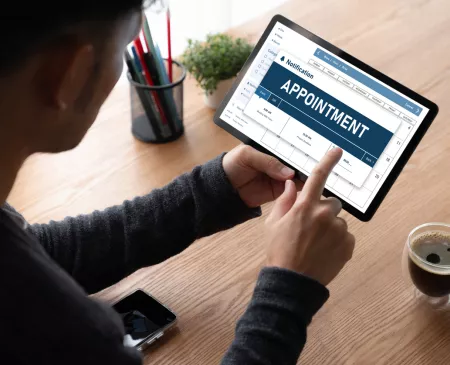Healthcare consumers are looking for options that align with their preferences for how they access and receive care. With greater competition, providers must rise to the occasion, delivering an exceptional consumer experience. But first they need to understand exactly what consumers are after. This means asking and listening to consumers, rather than guessing what they need and want.
A new national consumer survey by Chartis and Jarrard, a Chartis Company, explores why patients choose and stay with their providers. These critical insights help providers understand how to build a stronger access function that generates demand, provides excellent service, and deploys their care supply. Following are four key takeaways for healthcare leaders on how to meet consumers’ access preferences:
- Generate demand with convenient options, including attracting new patients and retaining existing ones.
- Excel at both digital and agent-mediated touchpoints to give consumers the service they want.
- Provide a menu of options for in-person and virtual care to meet consumer preferences.
- Offer primary care their consumers find convenient, or consumers will turn to urgent care.
1. Generate demand with convenient options, including attracting new patients and retaining existing ones.
What we heard: After considering cost, consumers are willing to switch both primary care and specialty providers because of convenience. These factors include appointment timeliness, location, and ease of connecting to the practice.
Top reasons patients leave their specialty care providers

Top reasons patients leave their primary care providers

What it means: When providers focus on seeing the patient at the right place and right time, they need to consider what “right” means from the consumer’s point of view as well. Clinically speaking, a patient may be able to wait 2 weeks for an appointment with a specialist. But to the patient, that may be an additional 2 weeks of worry they seek to avoid. Organizations should focus on solutions that unlock provider capacity, such as streamlining provider templates and utilizing advanced practice providers (APPs) in independent practice.
Consumers are also seeking convenient locations, and having multiple satellite locations creates scheduling complexities. Providers should develop seamless, cross-location scheduling workflows that provide options for patients. Additionally, consumers’ desire for seamless service underscores the need to invest in infrastructure that permits them to easily contact their provider and instantly access their medical records, test results, and payment information. This digital enablement keeps consumers connected to the organization between episodes of care.
2. Excel at both digital and agent-mediated touchpoints to give consumers the service they want.
What we heard: Consumers are split on how they prefer to schedule appointments, with 4 in 10 consumers preferring an online option. Preferences vary by demographics, such as age. Two-thirds of those 65 and older prefer a phone call, versus just over one-third of those aged 18 to 34.
Patients’ preferred methods of scheduling appointments

What it means: Providers need to maintain or strengthen agent-mediated phone support while simultaneously expanding online self-service tools, which are now essential. While encouraging consumers to use online options, organizations should also consider the demographics of their patient population and recognize that the public isn’t ready for an online-only approach to scheduling. Providers should expect a reduction in phone call volumes commensurate with the expansion of online options, which can permit call agents to enhance service for those who prefer a phone call.
3. Provide a menu of options for in-person and virtual care to meet consumer preferences.
What we heard: Nearly the same percentage of consumers prefer a virtual option (e.g., video chat, phone call, text chat) as those who prefer an in-person doctor’s office visit for initial care for minor or routine needs.
Patient preference for care modalities

What it means: In-person care isn’t going away, due to both clinical need and consumer preference. But providers must develop care models that support multiple care modalities and permit care team members to switch seamlessly between those modalities. Clear triage protocols during the scheduling process will help identify whether a virtual visit could meet the patient’s needs, should the patient prefer. Organizations should also focus on increasing physician and APP comfort with virtual tools to ensure virtual visit efficiency.
4. Offer primary care their consumers find convenient, or consumers will turn to urgent care.
What we heard: Consumers are attracted to urgent care because they can walk in for care when they want it, including after hours. Most primary care providers don’t offer the same level of convenience.
Top reasons for receiving care at an urgent care or retail clinic

What it means: Primary care providers need to remove barriers to seeing patients quickly and conveniently. This means providing same-day access to care, even if it’s with another provider in the clinic, and expanding hours and access points for their patients. Scheduling templates can reserve an appropriate amount of same-day access. Providers should also consider leveraging their APP workforce to meet the demand for more urgent needs. Scheduling protocols should factor not only the clinical necessity but also patients’ desire to be seen quickly.
Expand options for consumers with an eye toward convenience
We heard from consumers that remaining competitive in today’s market will require more options, with a focus on convenience, as defined by consumer demand for timeliness, digital options, and accessible locations. Providers should expedite implementation of digital solutions while still investing in traditional access points and the in-person clinic experience. In this way, they’ll better fulfill patient preferences and deliver timely access that keeps patients healthy and engaged with their organization.




